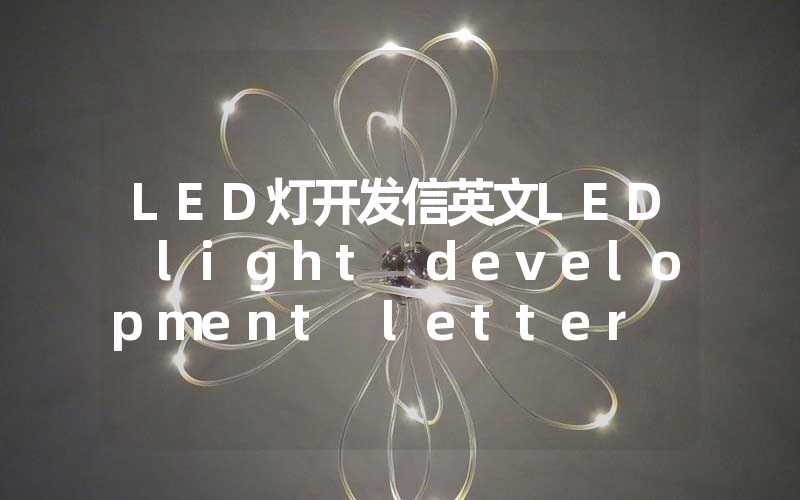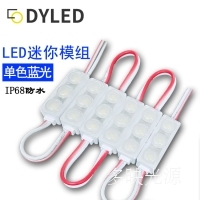【摘要】LED灯开发信英文(LED light development letter in English)IntroductionLED (Light Emitting Diode) technology has revolutionized the lighting industry with its......
.png)
Introduction
LED (Light Emitting Diode) technology has revolutionized the lighting industry with its energy efficiency, long lifespan, and versatility. LED lights are now widely used in various applications, including residential, commercial, and industrial lighting, as well as automotive and electronic devices. In this letter, we will explore the development of LED lights and their impact on the lighting industry.
The Evolution of LED Lights
In the early days, LED lights were primarily used as indicator lights in electronic devices. However, advancements in technology have led to the development of high-power LEDs capable of producing bright white light. This breakthrough has paved the way for LED lights to be used as a viable alternative to traditional incandescent and fluorescent lights.

LED lights are made up of semiconductor materials that emit light when an electrical current passes through them. The color of the light emitted can be controlled by adjusting the composition of the semiconductor materials. This flexibility allows for the production of LED lights in a wide range of colors, including red, green, blue, and white.
Advantages of LED Lights
LED lights offer several advantages over traditional lighting technologies:
Energy Efficiency: LED lights consume significantly less energy than incandescent and fluorescent lights. They convert almost all the energy they consume into light, whereas traditional lights waste a substantial amount of energy as heat.
Long Lifespan: LED lights have an exceptionally long lifespan, lasting up to 50,000 hours or more. This longevity reduces the need for frequent replacements, resulting in cost savings and reduced waste.
Instant On: Unlike fluorescent lights that take time to warm up, LED lights provide instant illumination. This feature is particularly useful in applications where immediate lighting is required.
Environmentally Friendly: LED lights do not contain hazardous substances like mercury, which is commonly found in fluorescent lights. Their energy efficiency also contributes to a lower carbon footprint.
Applications of LED Lights
The versatility of LED lights has led to their widespread use in various applications:
Residential Lighting: LED lights are commonly used in homes for general lighting, task lighting, and accent lighting. They can be found in lamps, ceiling fixtures, and even as decorative lighting.
Commercial Lighting: LED lights are extensively used in commercial spaces, including offices, retail stores, and restaurants. Their energy efficiency and long lifespan make them an economical choice for businesses.
Industrial Lighting: LED lights are ideal for industrial environments due to their durability and resistance to vibrations and shock. They are often used in warehouses, factories, and outdoor industrial areas.
Automotive Lighting: LED lights are increasingly used in automotive applications, including headlights, taillights, and interior lighting. They provide better visibility and consume less energy compared to traditional automotive lights.
Electronic Devices: LED lights are also used in electronic devices, such as smartphones, laptops, and televisions. They provide backlighting for displays and indicators for various functions.
Ongoing Development and Future Trends
The development of LED lights continues to advance, with ongoing research focused on improving efficiency, color quality, and affordability. Innovations in LED chip technology have led to higher lumen output and better color rendering, making LED lights even more appealing to consumers.
As LED lights become more affordable, their adoption is expected to increase further. The market for smart LED lighting systems, which can be controlled remotely and offer customizable lighting options, is also growing rapidly.
Conclusion
LED lights have transformed the lighting industry with their energy efficiency, long lifespan, and versatility. They offer numerous advantages over traditional lighting technologies and find applications in various sectors. With ongoing advancements and decreasing costs, LED lights are poised to become even more prevalent in the future, offering sustainable and customizable lighting solutions.
 logo
logo
